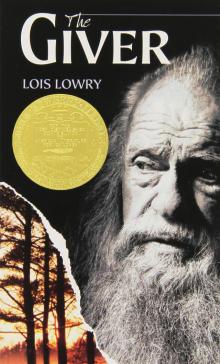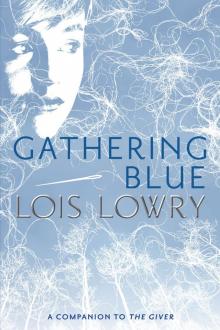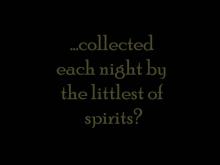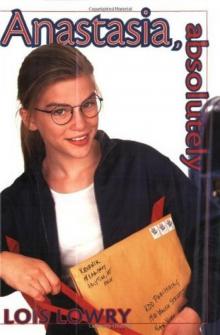- Home
- Lois Lowry
On the Horizon
On the Horizon Read online
Contents
* * *
Title Page
Contents
Copyright
Dedication
Part 1. On the Horizon
That Morning
Rainbows
Aloha
She Was There
Leo Amundson
George and Jimmie
Solace
Jake and John Anderson
Birthday
The Beach
The Band
The Musicians
Captain Kidd
James Myers
Silas Wainwright
8:15, December 1941
The Fourth Turret
Child on a Beach
Pearl Harbor
Part 2. Another Horizon
Names
Japanese Morning
The Cloud
Afterward
Takeo
The Red Tricycle
Tram Girls
Sadako Sasaki
Chieko Suetomo
The Tricycle
8:15, August 1945
Hiroshima
Part 3. Beyond the Horizons
Meiji
After That Morning
Bon Odori
Hibakusha
Invisible
The Word For “Hate”
Girl on a Bike
Gaijin
Now
Tomodachi
Author’s Note
Bibliography
Read More from Lois Lowry
About the Author
About the Illustrator
Connect with HMH on Social Media
Text copyright © 2020 by Lois Lowry
Illustrations copyright © 2020 by Kenard Pak
All rights reserved. For information about permission to reproduce selections from this book, write to [email protected] or to Permissions, Houghton Mifflin Harcourt Publishing Company, 3 Park Avenue, 19th Floor, New York, New York 10016.
hmhbooks.com
The illustrations in this book were done in pencil and edited digitally.
Japanese calligraphy on page 66 by Yoriko Ito
Cover design by Whitney Leader-Picone
Library of Congress Cataloging-in-Publication Data
Names: Lowry, Lois, author. | Pak, Kenard, illustrator.
Title: On the horizon / Lois Lowry ; illustrated by Kenard Pak.
Description: Boston : Houghton Mifflin Harcourt, [2020] | Audience: Ages: 10–12 | Audience: Grades: 4–6 | Summary: “From two-time Newbery medalist and living legend Lois Lowry comes a moving account of the lives lost in two of WWII’s most infamous events: Pearl Harbor and Hiroshima. With evocative black-and-white illustrations by SCBWI Golden Kite Award winner Kenard Pak.”—Provided by publisher.
Identifiers: LCCN 2019008795 (print) | LCCN 2019980713 (ebook)
ISBN 9780358129400 (hardcover) | ISBN 9780358129387 (ebook) | ISBN: 978-0-358-35476-5 (signed edition)
Subjects: LCSH: Lowry, Lois—Childhood and youth—Juvenile literature. | World War, 1939–1945—Casualties—Juvenile literature. | Pearl Harbor (Hawaii), Attack on, 1941—Juvenile literature. | World War, 1939–1945—Hawaii—Juvenile literature. | World War, 1939–1945—Japan—Hiroshima-shi—Juvenile literature. | World War, 1939–1945—Personal narratives, American—Juvenile literature. | Hiroshima-shi (Japan)—History—Bombardment, 1945—Juvenile literature.
Classification: LCC D743.7 .L69 2020 (print) | LCC D743.7 (ebook) | DDC 940.54/25219540922—dc23 LC record available at https://lccn.loc.gov/2019008795
LC ebook record available at https://lccn.loc.gov/2019980713
v1.0320
For Howard, with love
PART 1.
On the Horizon
On December 7, 1941, early on a Sunday morning, Japanese planes bombed Pearl Harbor, in Hawaii. Most of the United States Pacific Fleet was moored there. Tremendous damage was inflicted, and the battleship Arizona sank within minutes, with a loss of 1,177 men.
The bombing of Pearl Harbor that day was the beginning, for the United States, of World War II.
I was born in Honolulu in 1937. Years later, as I watched a home movie taken by my father in 1940, I realized that as I played on the beach at Waikiki, USS Arizona could be seen through mist in the background, on the horizon.
That Morning
They had named the battleships for states:
Arizona
Pennsylvania
West Virginia
Nevada
Oklahoma
Tennessee
California
Maryland
They called them “she”
as if they were women
(gray metal women),
and they were all there that morning
in what they called Battleship Row.
Their places
(the places of the gray metal women)
were called berths.
Arizona was at berth F-7.
On either side, her nurturing sisters:
Nevada
and Tennessee.
The sisters, wounded, survived.
But Arizona, her massive body sheared,
slipped down. She disappeared.
Rainbows
It was an island of rainbows.
My mother said that color arced across the sky
on the spring day when I was born.
On the island of rainbows,
my bare feet slipping in sand,
I learned to walk.
And to talk:
My Hawaiian nursemaid
taught me her words, with their soft vowels:
humuhumunukunukuāpua`a
the name of a little fish!
It made me laugh, to say it.
We laughed together.
Ānuenue meant “rainbow.”
Were there rainbows that morning?
I suppose there must have been:
bright colors, as the planes came in.
Aloha
My grandmother visited.
She had come by train across the broad land
from her home in Wisconsin, and then by ship.
We met her and heaped wreaths
of plumeria around her neck.
“Aloha,” we said to her.
Welcome. Hello.
I called her Nonny.
She took me down by the ocean.
The sea moved in a blue-green rhythm, soft against the sand.
We played there, she and I, with a small shovel,
and laughed when the breeze caught my bonnet
and lifted it from my blond hair.
We played and giggled: calm, serene.
And there behind us—slow, unseen—
Arizona, great gray tomb,
moved, majestic, toward her doom.
She Was There
We never saw the ship.
But she was there.
She was moving slowly
on the horizon, shrouded in the mist
that separated skies from seas
while we laughed, unknowing, in the breeze.
She carried more than
twelve hundred men
on deck, or working down below.
We didn’t look up. We didn’t know.
Leo Amundson
Leo was just seventeen.
He’d enlisted in July.
The U.S. Marines! He must have been proud.
And his folks, too: Scandinavian stock.
Immigrants to Wisconsin, like my own grandparents.
Leo was from La Crosse. My father was born there.
My Nonny had come from La Crosse by train.
Had she known Leo’s parents?
Had she nodded to Mrs. Amundson on the street?
Nonny and I played on the beach in the sunshine.
On the horizon, the boy from La Crosse
(just seventeen),
service number 309872,
was on the ship. We never knew.
George and Jimmie
George and Jimmie Bromley,
brothers from Tacoma,
handsome boys with curly hair.
(Jimmie was the older, but not by much.)
There were thirty-seven sets of brothers aboard
(one set was twins).
And a father and son,
Texans: Thomas Free and his
seventeen-year-old boy, William.
Both gone. Both lost.
They found George Bromley’s body.
Not Jimmie’s, though.
Solace
The hospital ships had names that spoke of need:
Comfort
Hope
Solace
Mercy
Refuge
They carried the wounded and ill.
That morning, Solace was moored near the Arizona.
She sent her launches and stretchers across.
The harbor had a film of burning oil.
Scorched men were pulled one by one from the flames
and taken to Solace.
Jake and John Anderson
John Anderson survived the attack.
He’d been preparing for church.
Rescued, he asked to go back.
He begged to return, to search.
He was burned and bleeding.
“My brother’s still there,” he said,
distraught, desperate, and pleading.
“Jake’s there! I know he’s not dead!”
But one would die, and one live on.
Identical twins. Jake and John.
Birthday
Everett Reid turned twenty-four
December sixth, the day before.
He held the rank machinist’s mate.
He’d celebrated, stayed out late
with friends; they’d danced and sung.
He lived ashore. He’d married young.
In the morning, when he woke,
he heard the sirens, saw the smoke.
He’d remember all his life
the hasty parting from his wife,
her quick and terrified embrace,
his frantic journey to the base.
His birthdays, though, for many years
brought no joy. Just grief. Just tears.
The Beach
The morning beach was deserted.
We were alone, Nonny and me
(and Daddy, his camera whirring).
I tiptoed, pranced, and flirted
with waves. Just we three
and empty beach. Nothing stirring.
And if we’d looked? And been alerted
to a gray ship at the edge of the sea?
The mist would still have been there, blurring
the shape of a ship moving slowly.
Now, years later, it seems holy.
The Band
NBU 22. That’s what it was called:
Navy Band Unit 22. The Arizona band.
That morning—it was not yet eight—
they were on deck, about to play.
(Their music raised the flag each day.)
When the alert came,
they ran to their battle station—
they called it the black powder room.
Their job was to pass ammunition
to the gunners. But the black powder exploded.
Twenty-one young men, prepared
for morning colors. Not one was spared.
All the high-stepping boys
who’d marched at high school
football games, once; who’d enlisted;
now, with their instruments, lay twisted.
The Musicians
Neal Radford: At twenty-six,
Neal was the oldest among
the musicians. The others
were all so very young,
like Alexander Nadel—don’t forget
he went to Juilliard! But was still
just twenty. He played cornet.
So did the youngest; that was Bill
McCary, southern boy, seventeen.
An only child from Birmingham,
Billy was eager, bright, and keen
to give his all for Uncle Sam.
Music was their main pursuit.
Curtis Haas—they called him Curt—
played clarinet, tenor sax, and flute.
A handsome kid: a clown, a flirt.
Each band member was, like him,
such a source of family pride.
Curt was young, hardworking, trim;
twenty-one the day he died.
Back home each one had friends they missed,
dogs they’d raised, and girls they’d kissed;
childhood rooms with model planes,
boyhood bikes with rusted chains;
moms and dads and baseball teams,
and dreams—each one of them had dreams.
Captain Kidd
It sounds like the name of a pirate.
Nonny told me stories of pirates,
of trolls, and dragons, and kings.
Imaginary things.
He was not an imaginary hero.
He was Captain Isaac Campbell Kidd,
commanding officer of USS Arizona.
His friends called him Cap.
When he was made commander
of the entire Battleship Division,
he became an admiral.
Admiral Kidd ran to the bridge
that morning in December.
His Naval Academy ring
was found melted and fused to the mast.
It is not an imaginary thing,
a symbol of devotion so vast.
James Myers
James was from Missouri
and had two brothers.
The older boy had died in France
in World War I.
The youngest (out in a field,
bringing in the cows, when a storm struck)
was killed by lightning.
He was fifteen.
So James was left.
He married, and had two sons himself.
But his wife died young, and
the little boys, Jimmy and Gordon,
went to live with their grandma in Seattle.
It was the other grandma,
widowed Mary Myers, in Missouri,
who opened the telegram with dread.

 The Willoughbys
The Willoughbys The Giver
The Giver Messenger
Messenger Gathering Blue
Gathering Blue Gooney Bird and All Her Charms
Gooney Bird and All Her Charms Taking Care of Terrific
Taking Care of Terrific Gooney Bird on the Map
Gooney Bird on the Map The Birthday Ball
The Birthday Ball Anastasia's Chosen Career
Anastasia's Chosen Career Number the Stars
Number the Stars The Silent Boy
The Silent Boy Son
Son Attaboy, Sam!
Attaboy, Sam! Gooney Bird Greene
Gooney Bird Greene The One Hundredth Thing About Caroline
The One Hundredth Thing About Caroline Anastasia Has the Answers
Anastasia Has the Answers Your Move, J. P.!
Your Move, J. P.! See You Around, Sam!
See You Around, Sam! All About Sam
All About Sam Rabble Starkey
Rabble Starkey A Summer to Die
A Summer to Die Anastasia at This Address
Anastasia at This Address Anastasia Again!
Anastasia Again! Gooney the Fabulous
Gooney the Fabulous Gossamer
Gossamer Anastasia, Absolutely
Anastasia, Absolutely Gooney Bird Is So Absurd
Gooney Bird Is So Absurd Anastasia at Your Service
Anastasia at Your Service Bless this Mouse
Bless this Mouse Find a Stranger, Say Goodbye
Find a Stranger, Say Goodbye Autumn Street
Autumn Street Stay Keepers Story
Stay Keepers Story Anastasia Krupnik
Anastasia Krupnik Zooman Sam
Zooman Sam On the Horizon
On the Horizon Anastasia, Ask Your Analyst
Anastasia, Ask Your Analyst Us and Uncle Fraud
Us and Uncle Fraud Switcharound
Switcharound The Willoughbys Return
The Willoughbys Return Dear America: Like the Willow Tree
Dear America: Like the Willow Tree Shining On
Shining On Messenger (The Giver Trilogy)
Messenger (The Giver Trilogy) Giver Trilogy 01 - The Giver
Giver Trilogy 01 - The Giver